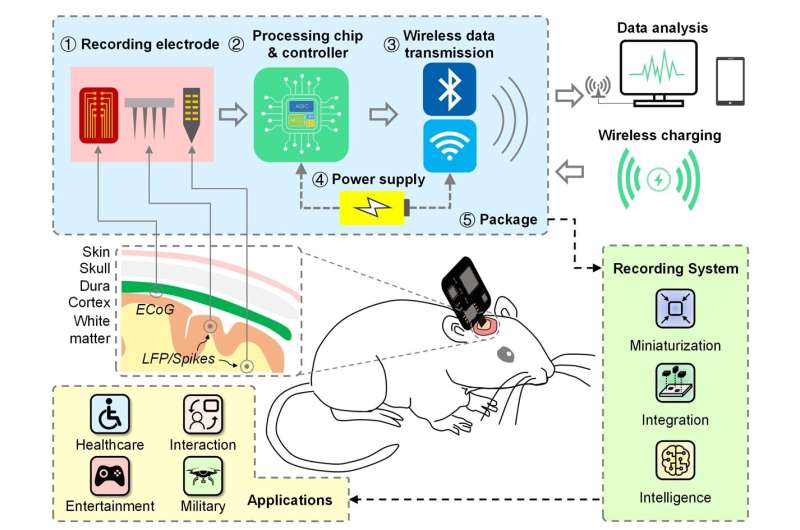Wireless neural recording system is a significant trend for brain-computer interface in the next decade

An implantable brain-computer interface (BCI) has proven to be effective in the field of sensory and motor function restoration and in the treatment of neurological disorders. Using a BCI recording system, we can transform current methods of human interaction with machines and the environment, especially to help those with cognitive and mobility disabilities regain mobility and reintegrate into society. However, most reported work has focused on a simple aspect of the whole system, such as electrodes, circuits, or data transmission, and only a very small percentage of systems are wireless. "A miniature, lightweight, wireless, implantable microsystem is key to realizing long-term, real-time, and stable monitoring on freely moving animals or humans in their natural conditions," Bowen Ji says.
Ji, together with lab director Honglong Chang (Unmanned System Institute, Northwestern Polytechnical University), and collaborator Jingquan Liu (Department of Micro/Nano Electronics, Shanghai Jiao Tong University), reviewed the latest progress in wireless epicortical and intracortical neuronal recording systems in five closely linked subsections, including recording electrodes, processing chips and controllers, wireless data transmission, power supply, and packaging. Challenges facing these systems were also summarized to create a direct path for future long-term and reliable recording systems according to existing technical shortcomings.
"The human brain has more than 80 billion neurons; however, current systems are far from sufficient to handle such a large number," Liu says. Therefore, the development of wireless implantable neuronal recording systems still faces the following challenges: high throughput, wireless transmission, power consumption and supply, heat accumulation, minimization, and lifetime.
Overall, the wireless implantable neuronal recording system is an emerging research field with strong comprehensiveness and interdisciplinary integration. It involves micro-nano manufacturing, microelectronics, communication, energy, biomedicine, brain science, and artificial intelligence. With the development of the above technologies, wireless implantable BCI systems will become more miniaturized, integrated, and intelligent for broader applications in humans in the next decade.
The research was published in Science China Information Sciences.
More information: Bowen Ji et al, Recent advances in wireless epicortical and intracortical neuronal recording systems, Science China Information Sciences (2022). DOI: 10.1007/s11432-021-3373-1



















